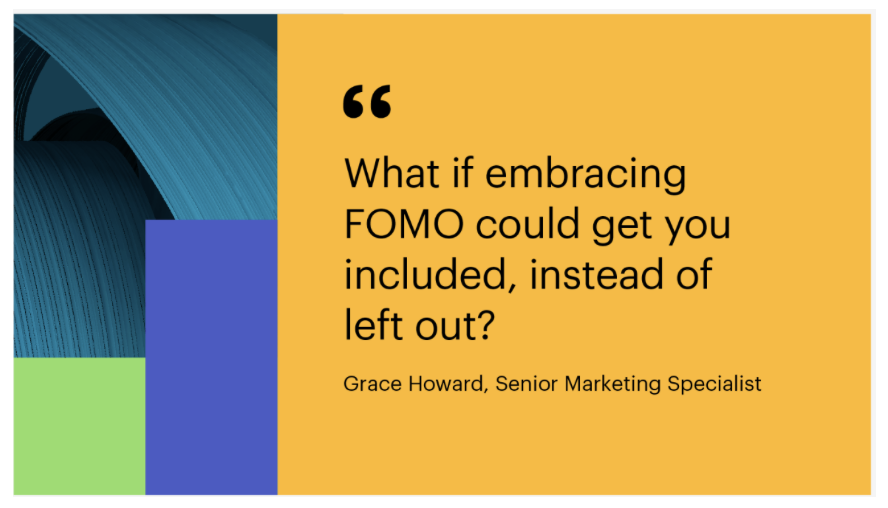Intent data, account-based marketing, and orchestration are on (almost) every marketer’s “to-do” list, and all of these things work best in tandem with one another. A lot of marketers are using intent data, have an ABM platform and may even have some level of orchestrated campaigns. Marketers are missing the mark when it comes to taking that intent data and using it to fuel orchestrated ABM campaigns that can move prospects (based on intent signals) to different stages of the campaign. If you find yourself with intent data and an ABM platform – here are three ways you can start using those things together to create an orchestrated campaign.
Still unsure about how to use your intent data? Try our Definitive Guide to Activating Intent Data.
Intent-based targeting
Dynamic audiences
One of the biggest challenges marketers face every day (besides overwhelming expectations with limited budget and resources) is knowing what accounts should be nurtured at what time. Intent-based targeting fills that gap. Marketing teams now have the power to create dynamic audiences based on intent-data that can fuel orchestrated campaigns. Intent scores can change daily, and utilizing dynamic audiences ensures you’re never missing out on accounts with high propensity to buy.
While it is common to see intent-based audiences in regular ABM campaigns, it’s not as often found in ABM orchestrated/multichannel campaigns. This is a missed opportunity because the value of intent is that it tells you who is interested in your product now. If you rely on a human to manually upload accounts/contacts and push them through stages, you will likely be a few steps behind where the prospect is in their purchase journey. ABM orchestrated campaigns can map accounts based on intent topics and then move them through a personalized buying experience, without the constant involvement from marketing.
Create and enrich actual leads
While creating dynamic audiences based on intent is a great way to begin targeting personas quickly within an account, getting to the individual decision-makers or contacts demonstrating intent to buy is the next piece of the puzzle. Knowing what accounts are looking to make a purchase can only take you so far – using intent to identify the actual buying group is what builds pipeline with a higher chance of revenue.
While you may already have an intent data provider that gives you visibility into what accounts are in a buying cycle, you will need to determine the people you need to reach. You’ve found the building, but now you need to find the people inside.
Intent based personalization
Website overlays + pop-ups
One of the best ways to start using intent data is by personalizing your website with overlays and pop-ups based on known topics of interest. If an account is showing intent on one of the many offerings you have, segment the account and personalize the site so the next time they come to your website they are met with relevant messaging that guides them to the next step in their purchase journey. Intent is also a great way to choose who sees what type of pop-up CTA based on topics of interest.
Onsite messaging
Similarly to the website overlays and pop-ups, onsite messaging can and should be adjusted for prospects showing intent. Account behavior can be flagged before the account ever comes to your website. Based on their behavior, accounts can be categorized into different audiences based on topics or solutions of interest. Then when the accounts do come to your website the website content is altered to fit their needs and goals. Pro tip: even without intent you can use this tactic to change out content and imagery based on industry.
See more ways you can use intent-based personalization.
Intent-based sales actions
Custom landing pages
Knowing the best time to reach out is one thing, but knowing what to say when you reach out is the second piece of the puzzle. With intent-based orchestrations, you can see those signals and automatically trigger custom outreach resources. Sales and Business Development teams can use those materials, customize them and reach out with information that is relevant to the prospect’s goals. Another thing to remember is as the intent signals change, it’s important to respond by adjusting content to the new needs of the prospects.
Trigger next best action for sales reps
Intent-based orchestrations can support your sales team by flagging when accounts are researching your product and service (or your competitors). When intent signals come in, it can send notifications to your sales team via email or CRM. So your sales team is getting a fuller picture of where prospects are in their buyer’s journey, even if they are not sharing that information. For example, sometimes prospects go cold and ghost your sales team. It may seem like the deal is lost, but other times intent signals show that they are still interacting with content on your website. That is when an intent-based orchestration would identify that signal and push the prospect to another set of messaging that is aligned with where they are in their buyer’s journey.
Go beyond identifying new accounts
Intent data is only powerful if you know how to utilize it throughout the entire funnel, beyond just identifying new accounts. It plays a key part in taking that a step further in ABM orchestrated campaigns by revealing what topics and solutions are of interest and should be prioritized with personalized content, and actions by the sales team. Intent data paired with ABM orchestration can be the foundation for a successful demand generation strategy. While both intent data and ABM orchestration are important on their own, together is where you see the multiplier effect.
[Originally published on leadsift.com]







